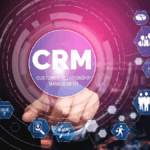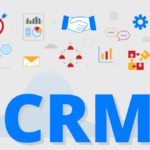In today’s hyper-digital, fast-paced business environment, data is the foundation of successful operations. But as data is collected across various departments—sales, marketing, support, e-commerce, and finance—businesses often face a daunting challenge: disconnected systems. This is where CRM system integration comes in.
A Customer Relationship Management (CRM) system is powerful on its own, but when integrated with other business tools and platforms, it becomes the central nervous system of your organization—streamlining operations, boosting productivity, and enhancing customer experiences.
This comprehensive guide explores the importance, methods, tools, and benefits of CRM system integration, and how it can position your business for sustainable success.
What Is CRM System Integration?
Definition and Overview
CRM system integration is the process of connecting your CRM platform with other tools and technologies used across the business—like marketing software, e-commerce systems, ERP platforms, communication apps, and customer support tools.
What It Means Practically
- A lead captured via your website automatically appears in your CRM.
- Sales reps can view customer email history from Gmail inside the CRM.
- Customer support agents see order history from your e-commerce platform when handling tickets.
- Executives get unified reports combining CRM, marketing, and financial data.
Why Integration Matters More Than Ever
Eliminate Silos and Fragmentation
Disconnected tools create information silos, miscommunication, and inefficiency. Integration centralizes data, allowing departments to work from a single source of truth.
Deliver Seamless Customer Experiences
Customers expect every team—sales, service, support—to have context. Integration ensures that each interaction is personalized and informed.
Boost Productivity and Reduce Manual Work
Automating data transfers between systems saves time, reduces errors, and empowers your team to focus on value-added tasks.
Real-Time Data Access and Decision-Making
With integrated systems, decision-makers can access real-time dashboards and analytics that combine data from multiple departments.
Key CRM Integrations That Drive Success
1. Email and Calendar Integration
Tools: Gmail, Outlook, Office 365
Benefits:
- View emails directly in CRM
- Log communications automatically
- Schedule meetings and sync calendars
2. Marketing Automation Integration
Tools: Mailchimp, HubSpot Marketing Hub, ActiveCampaign
Benefits:
- Share contact segments across platforms
- Sync campaign results into CRM
- Score and nurture leads based on behavior
3. E-Commerce Integration
Tools: Shopify, WooCommerce, Magento
Benefits:
- Access customer purchase history
- Send automated abandoned cart emails
- Recommend products based on CRM data
4. Customer Support Integration
Tools: Zendesk, Freshdesk, Intercom
Benefits:
- See support tickets inside CRM
- Track customer satisfaction metrics
- Coordinate better between sales and support
5. Accounting and Finance Integration
Tools: QuickBooks, Xero, Stripe, PayPal
Benefits:
- Track payments and invoices in CRM
- Analyze customer lifetime value (CLV)
- Automate billing notifications
CRM Integration Methods
API Integration
Application Programming Interfaces (APIs) allow different platforms to talk to each other. Most modern CRMs offer open APIs, enabling custom integrations with almost any third-party tool.
Pros:
- Highly customizable
- Real-time data exchange
- Secure and scalable
Cons:
- Requires developer resources
- May involve ongoing maintenance
Native Integrations
These are pre-built integrations offered directly by the CRM platform (e.g., HubSpot + Gmail, Zoho + Slack).
Pros:
- Easy to set up
- No coding required
- Reliable support
Cons:
- Limited customization
- May not cover all use cases
Middleware/Third-Party Integration Tools
Platforms like Zapier, Make (Integromat), or Tray.io act as bridges between apps.
Pros:
- Ideal for non-technical users
- Quick to deploy
- Integrates hundreds of tools
Cons:
- May have usage limits
- Potential delays in data sync
Building a CRM Integration Strategy
Step 1: Map Your Business Workflow
Identify which teams use which tools and how data moves between them. Look for:
- Manual data entry
- Repeated tasks
- Communication gaps
Step 2: Define Integration Goals
Do you want to:
- Improve lead capture speed?
- Enable marketing automation?
- Provide better customer service?
- Centralize reporting?
Step 3: Choose the Right CRM Platform
Select a CRM that supports:
- Open APIs
- Built-in integrations
- Custom workflows
- Third-party connector tools
Step 4: Test and Optimize
Start with a few key integrations, test them thoroughly, and gather feedback from your team. Monitor:
- Data accuracy
- Sync frequency
- Performance impact
Common Challenges in CRM Integration
Data Duplication and Inconsistencies
Multiple systems syncing data can lead to duplicate or conflicting records. Use data validation rules and deduplication tools.
Compatibility Issues
Not all platforms are built to integrate easily. In some cases, custom development may be necessary.
Team Training and Adoption
Even with perfect integrations, success depends on your team’s ability to use the tools effectively. Provide hands-on training and clear documentation.
Cost and Resource Allocation
Complex integrations may require technical expertise and ongoing support. Budget appropriately for both setup and maintenance.
Case Study: CRM Integration in Action
Company: Mid-size B2B SaaS Provider
CRM Used: Salesforce
Integrations:
- Gmail for communication
- Mailchimp for marketing
- Zendesk for support
- Stripe for billing
Results After 6 Months:
- 35% increase in lead response time
- 22% improvement in sales conversions
- Support resolution time reduced by 40%
- Unified customer dashboard across departments
Best Practices for Successful CRM Integration
- Start Small: Begin with high-impact, low-risk integrations
- Ensure Data Accuracy: Clean up your CRM before connecting other systems
- Maintain Documentation: Keep track of integration setups, workflows, and rules
- Automate Intelligently: Automate routine tasks but maintain human oversight for critical processes
- Review and Evolve: Integration needs change as your business grows — audit regularly
The Future of CRM Integration
Artificial Intelligence (AI) Integration
AI tools will plug into CRMs to suggest next-best actions, forecast churn, and recommend content in real-time.
Real-Time Sync and Automation
Future integrations will offer real-time, bi-directional sync — meaning updates in one system are instantly reflected in others.
IoT and CRM
As IoT devices become common in retail and manufacturing, CRMs will integrate sensor data to optimize customer journeys and inventory management.
Unified Platforms
Many vendors are moving toward all-in-one business platforms that include CRM, marketing, support, finance, and operations tools in a single ecosystem.
Conclusion
CRM system integration is no longer a “nice-to-have” — it’s a strategic imperative. In an era defined by data-driven decision-making, remote collaboration, and personalized customer experiences, integrating your CRM with your existing tools helps you maximize efficiency, minimize friction, and delight your customers.
When your systems work together, your people do too. Integration empowers your team to spend less time chasing data and more time nurturing relationships, closing deals, and solving real problems. If your business is serious about growth, CRM system integration is the foundation that makes it possible.
FAQs
1. What tools can I integrate with a CRM system?
You can integrate CRMs with email platforms (Gmail, Outlook), marketing tools (Mailchimp, ActiveCampaign), e-commerce platforms (Shopify, WooCommerce), support tools (Zendesk, Freshdesk), and finance software (QuickBooks, Stripe), among many others.
2. Do I need a developer to integrate systems with my CRM?
Not necessarily. Many CRMs offer native integrations or third-party tools like Zapier. However, for complex or custom integrations, developer assistance may be required.
3. Is CRM integration expensive?
Costs vary. Basic integrations via Zapier or native tools are often low-cost. More complex, API-based integrations may require development resources and ongoing support.
4. How long does CRM integration take?
Simple integrations can be done in a few hours. Complex systems involving multiple departments may take weeks or even months to plan, test, and deploy.
5. What happens if I don’t integrate my CRM?
Without integration, data becomes siloed. This leads to inefficient workflows, poor customer experiences, lost sales opportunities, and limited visibility across your business.











